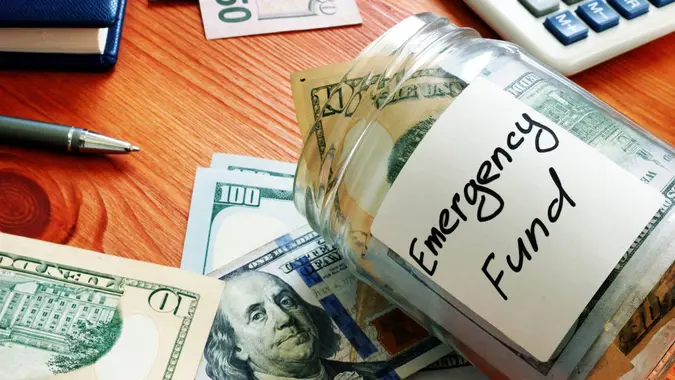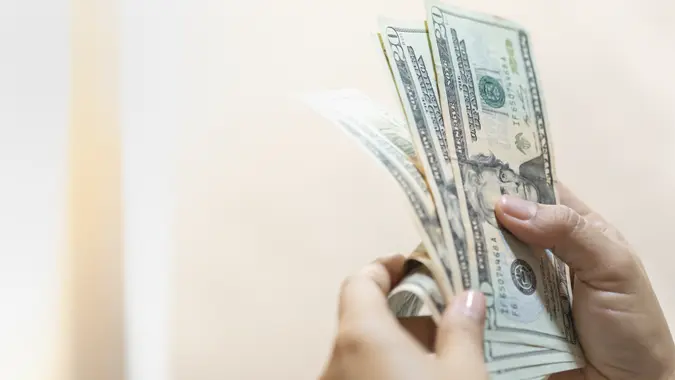4 Tools That Can Help You Build Your Emergency Fund Faster Than You Think

Commitment to Our Readers
GOBankingRates' editorial team is committed to bringing you unbiased reviews and information. We use data-driven methodologies to evaluate financial products and services - our reviews and ratings are not influenced by advertisers. You can read more about our editorial guidelines and our products and services review methodology.

20 Years
Helping You Live Richer

Reviewed
by Experts

Trusted by
Millions of Readers
An emergency fund is an important cornerstone of any financial plan. Most experts recommend having at least three to six months of expenses in an emergency fund to cover all the “expected unexpected” financial emergencies in life, from uninsured medical costs to home and auto repairs.
It can feel daunting, however, to save up the thousands of dollars it takes to fully make an emergency fund. Fortunately, there are some tools available that can help you build your emergency fund faster than you think. Here are some of the best options.
High-Yield Savings Accounts
A high-yield savings account should be one of your top choices as a place to build your emergency fund. While you won’t build long-term wealth by parking your money in a high-yield savings account, it’s a great place to keep your most important money safe and liquid.
Equally important, however, is that a high-yield savings account will build up your emergency fund faster because it pays significantly more interest than a traditional savings account. According to the Federal Reserve Bank of St. Louis, the average savings account pays just 0.46% in interest. Many high-yield savings accounts, on the other hand, pay 10x that amount or more. This will build up your savings even faster.
If you sock away $10,000 in a traditional savings account, for example, you might earn just $46 per year. But if you put it in a high-yielding savings account paying a 4.6% APY, you’ll earn $460 instead, making the savings process easier.
Money Market Funds
Money market funds offer a level of flexibility that you can’t get with just a savings account. Specifically, money market funds function something like a hybrid account, offering the higher yields of a savings account with the accessibility of a checking account, typically offering check writing privileges and sometimes debit card/ATM access as well.
However, it’s important to have discipline if you’re using a money market fund as a home for your emergency fund. The increased access to your money could make it easier to spend, rather than to build up consistent savings. Also, some money market accounts have high minimum balance requirements or fees, so it’s important to shop around for the best options.
As with savings accounts, there are both traditional and high-yield money market accounts. The national average yield for money market accounts, according to the St. Louis Fed, is just 0.64%. However, high-yield versions can pay many multiples of that.
Automation
The key to any savings or investment plan — even building an emergency fund — is consistency. Saving can be inherently difficult because there are so many competing demands for your earnings. Between the rising cost of living and the tendency to spend any “remaining” money on discretionary wants, there’s often not a lot of money left over for savings. This is where automation comes in.
Set up monthly (or even weekly) transfers from your checking account to your emergency fund so that you don’t even have to think about setting aside money for it. Before you know it, you will be used to the savings and will be able to budget the rest of your money around it.
Self-Management
Being smart about your money is one of the best ways to boost your emergency fund. A solid budget is a good first step, as it will allow you to better balance your income and expenses and trim costs where possible to increase your savings. Diverting all “found money” to your emergency fund is another great way to raise your balance fast.
Anytime you get a bonus, a tax return, or any other money that isn’t part of your monthly budget, use it to fill up your emergency fund. This will help you reach that recommended three-to-six-months’ worth of savings rapidly.
 Written by
Written by  Edited by
Edited by 
























